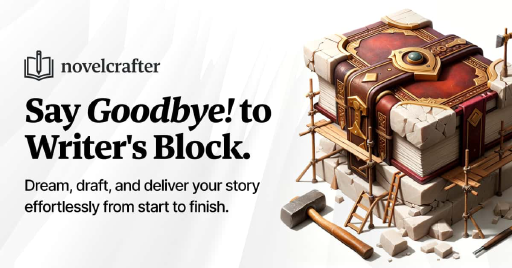Preparing for the Writing Adventure
Kicking off the adventure of writing a book takes a bit of planning. By setting clear plans and making a sensible writing timeline, you can keep the words flowing and the excitement alive.
Setting Clear Goals and Expectations
First off, you gotta know what you’re aiming for. Want to crank out a book in just 30 days? Then you’ll need some solid goals. Think about what you want your finished book to be about, and jot down little goals that’ll keep you on track. Here’s the deal:
- Daily Word Count: Pick a number that you can hit each day. It helps to break things down into bitesize pieces so it doesn’t feel like you’re climbing Mount Everest.
| Day | Daily Goal (Words) | Cumulative Total |
|---|---|---|
| 1 | 1,000 | 1,000 |
| 2 | 1,000 | 2,000 |
| 3 | 1,000 | 3,000 |
| 4 | 1,000 | 4,000 |
| … | … | … |
| 30 | 1,000 | 30,000 |
- Completion Dates: Decide when you want that first draft done, then maybe throw in some time for edits and polishing it up.
Picture your book all done. What’s it about? Who’s gonna read it? Keeping this image in mind can really keep you pumped and on track. If this whole writing thing is new to you, have a peek at some beginner tips we put together.
Creating a Realistic Writing Schedule
A good writing schedule is like a roadmap that’ll keep you from getting lost. Block off parts of your day just for writing. That way, you’ll make sure you’re making progress without burning out.
Check out this simple table to help structure your writing time:
| Day | Time Block | Activity |
|---|---|---|
| 1 | 9:00 AM – 11:00 AM | Writing (1,000 Words) |
| 2 | 2:00 PM – 4:00 PM | Writing (1,000 Words) |
| 3 | 10:00 AM – 12:00 PM | Writing (1,000 Words) |
| 4 | 1:00 PM – 3:00 PM | Writing (1,000 Words) |
| … | … | … |
Make sure your schedule fits with when you feel most creative. Some folks hit their stride in the morning, others might get their best ideas after dark. Tailoring your routine this way helps keep the creative juices flowing.
For more pointers on how to make writing a habit, check out our piece on developing a writing routine. By sticking to a steady routine, you’re setting yourself up to finish that book in no time!
Structuring Your Book
Think of your book’s structure as the bones holding everything together. If they’re out of place, you’ll have a wobbly mess instead of a story readers can’t put down. Here, we’ll talk about sketching out your plot and characters, plus the organization of chapters and scenes.
Outlining Your Plot and Characters
Before you get lost in the words, sketch your plot and meet your characters. It’s like setting up a GPS for your writing journey to make sure you’re on the right track and your ideas aren’t zooming off-road.
Steps to Outline Your Plot:
- Figure out your big message: What do you want your readers to walk away thinking or feeling?
- Spot the big moments: Pinpoint the events that’ll push your story to the edge. Think beginnings, big bangs, and happy (or not) endings.
- Craft character paths: Watch your characters grow, stumble, and maybe even do a happy dance along the way.
Here’s a handy table to spotlight your story’s major moments and character shifts:
 What Poetry Feels Like
What Poetry Feels Like| Plot Point | Description | Character Growth |
|---|---|---|
| Beginning | Launch the drama | Watch ’em take their first steps |
| Middle Chaos | Where things go bonkers | How do they cope? |
| Wrap-Up | Tying up loose ends | What’s changed in them? |
For more tricks on plotting, check out our guides on outline a story like a pro and creating characters that breathe.
Organizing Your Chapters and Scenes
Once you’ve set your plot and characters, it’s time to piece together the story chunk by chunk. This strategy keeps you sane and focused on your storytelling game.
Steps to Organize Chapters:
- Break it down: Each chapter should capture a unique snippet or emotion related to your tale.
- Sketch scenes for each chapter: Plan the moments that will happen in each chapter. Sprinkle in some action, chatting, and deep thinking to keep it spicy.
- Keep it smooth: Make sure one chapter glides into the next. Nail those cliffhangers so your readers can’t wait to flip the page.
Here’s a starting block for sorting your chapters and scenes:
| Chapter | Scenes | Key Focus |
|---|---|---|
| Chapter 1 | Scene A, Scene B | Meet your star player and setting |
| Chapter 2 | Scene C, Scene D | Throw in a problem or twist |
| Chapter 3 | Scene E, Scene F | Deepen relationships |
By mapping out chapters and scenes, you construct a can’t-look-away story that pulls readers right in. For more tricks on solid storytelling, check out our takes on nailed it! first chapters and novel-writing wisdom.
Writing Strategies for Efficiency
Getting a book done in just 30 days isn’t witchcraft—it demands some savvy strategies to keep the gears turning. Check out these clever hacks to up your writing game.
Sprint Writing Techniques
Sprint writing isn’t just a buzzword; it’s your new best friend. We’re talking setting a timer and hammering out those words like your life depends on it—okay, maybe not that drastic, but you get the idea. Here’s the lowdown on how to ace sprint writing:
| Time | Word Count |
|---|---|
| 15 Minutes | 200 – 300 words |
| 30 Minutes | 400 – 800 words |
| 45 Minutes | 600 – 1,200 words |
Make your sprints count with these no-nonsense steps:
- Distraction? What Distraction?: Hide from anything that’s not your keyboard or notepad.
- The Timer is King: Pick how long you wanna go and let the timer do its thing.
- Write Now, Edit Later: Let the words flow—good, bad, and ugly—just get ’em down.
- Pause Button: Once the sprint ends, grab some air or a chocolate bar. You’ve earned it.
Sprint writing is your ticket to pumping out the words and sticking to your plan.
Overcoming Writer’s Block
Ah, writer’s block, the pesky little gremlin we all bump into. Whether it’s fear of Aunt Judy’s judgment or your brain throwing a tantrum, here’s how to kick it to the curb:
- New Scenery, New Ideas: Got a living room that’s too dull? Hit up a local café or park.
- Freestyle Scribbling: Give yourself 10 minutes to rant on paper about absolutely anything.
- Jumpstart with Prompts: Use some writing starters to ignite that brain engine.
- Go Small: Tiny goals, folks—sentence or paragraph, let them add up.
- Chat It Out: Sometimes just yapping about your thoughts makes them clearer.
Need more on fighting writer’s block? Head over to our full guide.
With these sprinting techniques and anti-block strategies, you’ll be breezing through that book in no time, like a hot knife through butter. 30 days and you’ll have bragging rights over your finished manuscript.
Staying Motivated and Focused
Writing a book in a month is no small feat, but with a sprinkle of grit and determination, you can make it happen. Here’s the scoop on keeping yourself pumped and forging ahead with a nod to staying accountable and treating yourself right.
Accountability Buddies
Grabbing an accountability buddy can really put some pep in your step. Whether it’s your buddy scribbling away on their own novel or someone just rooting for you in your corner, having someone to check in with can keep you glued to your writing plan.
Take a look at what a partner-in-crime can bring to your writing game:
| Benefit | Description |
|---|---|
| Pep Talk | Get that nudge you need to keep writing regularly. |
| Fresh Eyes | Chatting about your ideas can bring helpful feedback and fresh angles. |
| Stick-to-itiveness | Knowing someone’s checking in on you keeps you hustling. |
Not sure where to find that perfect writing buddy? Try poking around your local writer’s nook or hopping online to connect through writing forums and social media hubs. Teaming up turns writing into a team sport where you can swap stories about your wins and woes together. For even more writing wisdom, have a look at our article on writing advice for new authors.
Treat Yourself Along the Way
A little pampering goes a long way when you’re tackling big tasks. Setting up a treat-yourself system for hitting those milestones can keep you buzzing. It could be as simple as munching on a favorite snack for knocking out 1,000 words or chilling with a movie after a chapter. Celebrate every victory, big or small.
Here’s a nifty reward setup to get you going:
| Milestone | Reward |
|---|---|
| 1,000 words down | Snack on a favorite treat |
| Chapter done! | Unwind with a movie or a chill day |
| Halfway there | Grab a new book or magazine |
| First draft done | Throw a small bash with your pals |
Spoil yourself a bit, but no need to break the bank. The goal here is to spark joy and keep your motivation high as you inch closer to that finish line. Feeling stuck? Dive into stories of other writers hitting their stride for a boost. Peek at our piece on how to improve writing skills for more ideas.
Balancing accountability with treating yourself can keep you locked in and moving forward in your writing adventure. Craft a circle of support and cheer on your wins, propelling you to inch ever closer to wrapping up that manuscript.
Editing and Polishing Your Draft
You’ve got your first draft down, now let’s make it shine! Time to polish up those words so your manuscript isn’t just good—it’s spectacular.
Revising and Rewriting
Revising is all about the big changes that take your draft to the next level. Here’s how you can spruce it up:
- Take a Breather: Step away for a bit. This break helps you come back with a fresh perspective.
- Read It Out Loud: Hearing it out loud can spot those pesky awkward spots or pacing stumbles.
- Check the Flow: Make sure your story rolls along smoothly. Characters should grow, and every scene should keep readers hooked.
- Keep It Clear: Find any parts that might leave folks scratching their heads. Simplify without losing the heart of the idea.
During the revision, keep an eye on these key points:
| Thing to Check | What’s the Deal? |
|---|---|
| Storyline | Does the story make sense? Any plot holes lurking? |
| Characters | Are they fleshed out? Do their actions make sense? |
| Momentum | Does the tale keep rolling? Tighten any slow patches. |
Once your revisions are done, you might need to tidy things up even more. Keep it tight and make sure every word earns its keep. Need some pointers on shaping your story? Check out our tips on how to outline a story.
Seeking Feedback
Tweaked your draft? Sweet. Now let’s see what others think. Getting outside perspective can be a game-changer.
- Beta Readers: Share your work with folks who get your vibe. Their feedback can be gold.
- Writing Circles: Join a group where writers swap tips and critiques. It’s like a creativity boost with a side of community.
- Pro Editors: If possible, invest in a professional editor. They can sprinkle some magic on your manuscript.
When gathering feedback, using a helpful form can steer your reviewers to focus on what matters:
| Feedback Area | Questions to Throw Their Way |
|---|---|
| Characters | Are they relatable? Do they grow through the story? |
| Interest | Does it hold attention, or are there dull bits? What part kept them hooked? |
| Understanding | Any bits that left them puzzled? Where did they need more info? |
By using this feedback, you’ll have the tools to tweak your manuscript until it’s just right. For more on sharpening those writing chops, check out our guide on how to improve writing skills. This back-and-forth process is key to getting your manuscript polished and good to go for the next exciting steps.
Finalizing Your Manuscript
Congrats! Your draft is done, now comes the wrap-up. That means sprucing up your manuscript and weighing your publishing choices.
Formatting Your Book
You want your book to look slick, right? Every publisher has its quirks, but some rules are golden.
| What to Format | How It Should Look |
|---|---|
| Font Style | Times New Roman or Arial |
| Font Size | 12-point |
| Line Spacing | 1.5 or double |
| Margins | 1 inch all around |
| Page Numbers | Top right corner |
| Chapter Titles | Centered and bold (size can vary) |
Nailing the format boosts readability and can catch the eye of the right folks. Check out our beginner writing tips if you’re hungry for more detailed know-how.
Considering Publishing Options
Now, think about how you’ll share your masterpiece with the masses. Pick a path that vibes with what you want and what you’ve got.
| Way to Publish | What’s Involved |
|---|---|
| Traditional Publishing | Submit to agents or publishers—they do the heavy lifting of production and distribution. |
| Self-Publishing | You’re the boss! Handle publishing and marketing, usually on sites like Amazon. |
| Hybrid Publishing | A mix of the two, team up with publishers for specific tasks. |
Get the 411 on each. Going the traditional route? Nail that submission process and craft a killer query letter. If self-publishing’s your jam, plan out how you’ll market and design your cover. Dive into resources like writing advice for new authors and how to publish your first book for more tips.
By getting your format on point and picking the right publishing track, you’re gearing your book up for its time in the spotlight—and picking up new skills in the publishing gig, too.


 Grab my poetry book, 'we're all just wanderers in the end' Here
Grab my poetry book, 'we're all just wanderers in the end' Here AD: Your Book Finally Written...
AD: Your Book Finally Written...